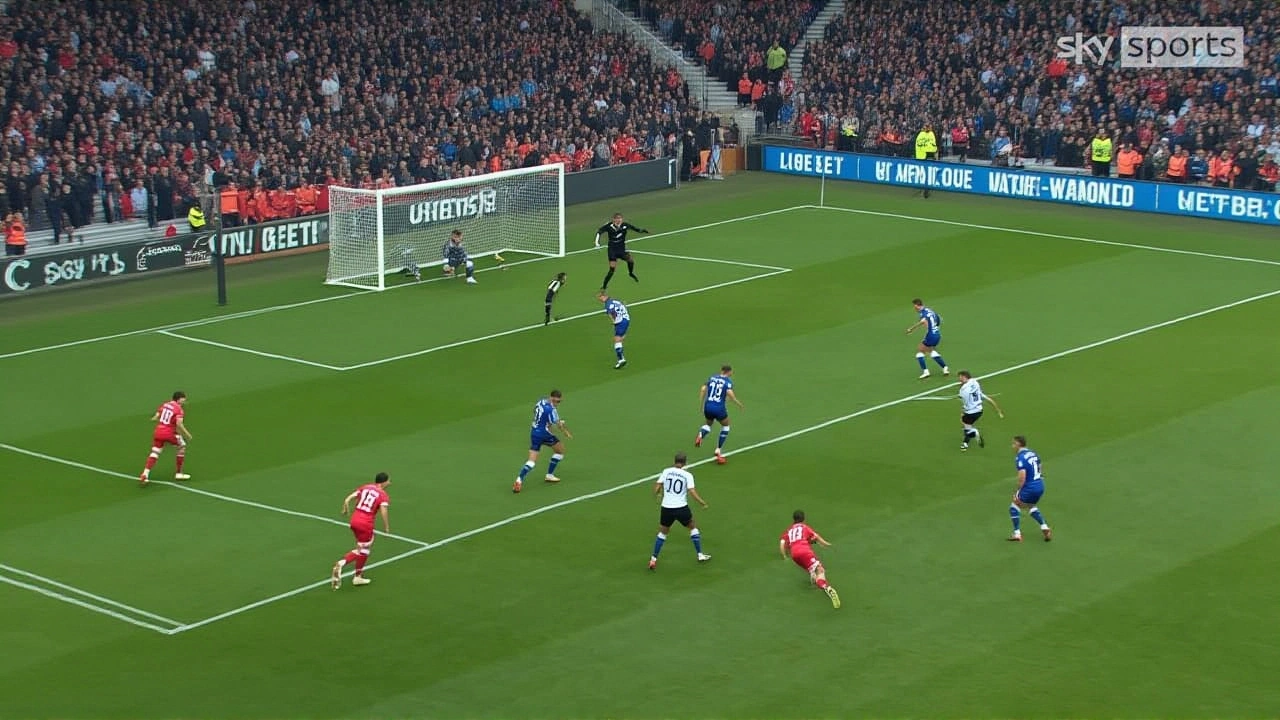On at the Riverside Stadium in Middlesbrough, the Middlesbrough FC hosted Sheffield Wednesday FC in a Sky Bet Championship fixtureRiverside Stadium. The match, which ended 3‑3, turned into one of the season’s most riveting comeback stories when the Owls clawed back from a three‑goal deficit in just 16 minutes.
First‑Half Dominance
Ben Doak, the 19‑year‑old Liverpool loanee, opened the scoring in the fifth minute with a low‑header that left the goalkeeper stranded. Finn Azaz then struck twice – a low drive into the bottom corner followed by a well‑timed finish – taking the visitors to a comfortable 3‑0 lead by the 30‑minute mark.
The midfield, marshalled by Michael Carrick, the former England midfielder now in charge of Middlesbrough, dictated tempo, while the backline looked solid despite a few nervous challenges.
Second‑Half Turnaround
The dressing‑room talk at halftime proved pivotal. Danny Rohl, the German‑born manager of Sheffield Wednesday, instructed his side to press higher and exploit the flanks. The plan worked immediately.
Just a minute after the restart, Swedish substitute Svante Ingelsson collected a through ball from Shea Charles and slotted home, sparking a roar from the traveling crowd.
Five minutes later, English midfielder Josh Windass found space at the edge of the box and fired a left‑footed strike that rattled the net, making it 3‑2.
The climax came in the 62nd minute when French right‑back Yann Valery broke through a tired Middlesbrough defence and curled a shot into the top corner, sealing the comeback.
Tactical Moves and Red Card
Midway through the first half, Dutch defender Rav van den Berg received a second yellow for a cynical foul on the Owls’ winger, forcing Middlesbrough to play the second half with ten men. The dismissal shifted the balance, allowing Rohl’s side to dominate possession – 41% versus 59% after the interval.
Roh́l’s substitutions, particularly the introduction of Ingelsson, gave Wednesday fresh legs and a different passing angle that Middlesbrough struggled to contain.
Statistical Snapshot
- First‑half possession: Middlesbrough 62%, Wednesday 38%
- Second‑half possession: Middlesbrough 41%, Wednesday 59%
- Expected Goals (xG) – first half: Middlesbrough 2.1, Wednesday 0.3
- Expected Goals (xG) – second half: Middlesbrough 0.7, Wednesday 2.4
- Attendance: 28,451 spectators (incl. ~1,200 Wednesday fans)
The numbers underline just how dramatic the swing was – the Owls generated almost four times the quality chances after the break despite being a man down.
What This Means for the Table
The draw left Middlesbrough perched in seventh place with 38 points after 22 games, a position that still keeps them in the play‑off conversation but also reveals a vulnerability that rivals will try to exploit.
Sheffield Wednesday, on the other hand, climbed to 18th with 24 points, lifting themselves three points clear of the relegation zone. The point feels priceless after a night that could have ended in a loss.
Looking Ahead
Rav van den Berg’s red card triggers an automatic one‑match suspension, meaning he’ll miss the next trip to Norwich City on December 30. Carrick will have to reshuffle his backline and decide whether to tighten the midfield or keep the attacking impetus that produced the early goals.
Rohl now has the confidence that his tactical tweaks work under pressure. If Wednesday can sustain this intensity, they may well steer clear of the relegation battle as the season progresses.
Frequently Asked Questions
How does the draw affect Sheffield Wednesday’s relegation fight?
The point lifts Wednesday to 18th place with 24 points, three points above the drop zone. It also provides a morale boost after a dramatic comeback, which could prove vital in the next handful of matches.
What led to Middlesbrough’s second‑half collapse?
A combination of losing Rav van den Berg to a red card, a shift in possession after halftime, and Rohl’s tactical changes – especially the introduction of Svante Ingelsson – left Middlesbrough vulnerable and unable to regain control.
Who were the key goal‑scorers for the Owls?
Swedish midfielder Svante Ingelsson opened the comeback, followed by English forward Josh Windass and French right‑back Yann Valery, who completed the three‑goal surge.
What does the result mean for Michael Carrick’s midfield strategy?
Carrick will likely reassess the midfield balance, perhaps opting for a more defensive pivot to protect a ten‑man setup, while still preserving the attacking flair that produced the early three goals.
When is Middlesbrough’s next fixture and who will they face?
Middlesbrough travel to Norwich City on December 30, 2024, where they will be without defender Rav van den Berg.
